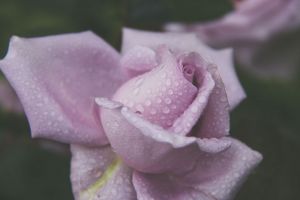Flowers, Reflexions
Flowers & Brits are not so different
I write this blog after experiencing the most beautiful sunny weather last weekend, it was amazing! I also write this blog from inside my office looking out the window at the constant heavy rain and reminding myself how much of a trained Brit I am for remembering my umbrella today. The British weather has never been one to disappoint when it comes to putting on an exciting show to keep us on our toes, it’s completely unpredictable – even if the weatherman disagrees.
The UK’s climate has never been the most hospitable when it comes to growing plants and flowers, but that doesn’t mean that it is impossible to do so. A plants main source of nourishment consists of sunshine and water, which at the moment is what our country is giving us on a need to know basis. The plants are loving it!
If we want to keep filling our gardens with beautiful flowers such as Field Pansy’s and Lavender then we need to learn to love the misbehaving weather that we are subjected to. Come sunshine or rain, it’s beneficial for all. We’re just going to have to take a leaf out of all the plants and flowers book and learn to suck it up. (Bad joke)
Learning to embrace the forever changing weather comes with its difficulties, we need wellies and sun cream, and we need umbrellas and sandals to begin with. Wearing any of those combinations will ensure that you’re prepared to go outside. Focusing more on how the plants and flowers we live amongst, they have a harder job at being prepared. Some plants have evolved over the years and learnt to deal with not the best of environments, much like the British population.
Plants that have adapted to dry desert conditions are called “xerophytes”. (Bit of a mouthful) They don’t usually have leaves as these would use up more of the water that they store, instead they have shallow roots that absorb the rain quick, some have long “taproots” that penetrate deep into the ground to extract water. Pretty fascinating stuff. Plants such as a cactus have evolved to store water even within the driest of conditions, their official name is a “succulent”. Another mouthful of a word “Halophytes” is used to describe plants that can live in very salty environments, they have a special way of drawing the salt out so they don’t dry up.
One that I have found the most interesting are “halophytes”, commonly these are tropical Mangrove trees. They have roots that absorb all the salt from the seawater which is carried through the sap of the tree to the top and pushed towards the old leaves, which then shed. Pretty impressive! When the salt is pushed into new healthy leaves, the glands from the leaves excrete the salt. Many mangroves have arching roots that are exposed to low tide, these roots can breathe. Yes, I said breath! They have breathing pores for taking in oxygen from the air.
Flowers and Brits are not too different, we are prepared for all the bad weather bestowed upon us and when the sun shines we all blossom and absorb as much sun as possible before it quickly goes away.

